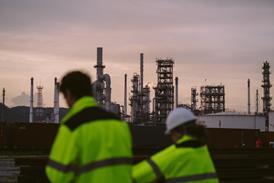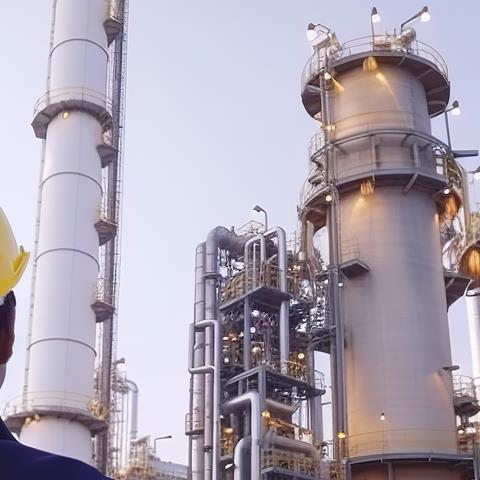The role of Responsible Care
Responsible Care is our ethos – Safe sites, safe workers, safe products. Responsible Care is the over-arching commitment that covers safety, health, environment, chemicals management and security. It is the chemical industry’s global voluntary initiative which companies commit to, and through national associations like CIA work together to continuously improve performance and standards. It also covers communication and engagement with stakeholders including neighbours and customers, about operations, processes and products. Started in 1986, 60 national associations around the world have signed up to the RC Global Charter.
The chemicals industry has a duty to demonstrate that companies have the structures in place, from the boardroom to the factory floor, that ensure hazardous materials and processes necessary for the products and services we all need do not pose a threat to the workforce or surrounding communities. Workers have to be protected from exposure to substances that could cause personal harm, and the public needs reassurance that potentially hazardous processes are operated so that risks are managed, controlled and minimised.
CIA member companies give these duties a very high priority, and we will continue to help our member companies achieve these aims through a wide range of activities and practical support for businesses. This includes best practice sharing so that lessons from incidents in other similar sectors such as oil and gas can be applied in the chemicals sector – the major incidents at sites such Buncefield and BP Texas City are good examples of this process of cross-sector learning. We also monitor performance under Responsible Care, and have been able to show a continuously improving trend of reducing accidents and ‘near miss’ incidents.
As well as direct working with our companies, CIA works closely with regulators, trade unions and other stakeholders to ensure we achieve the highest standards in safety. Our priority areas under which we work on this are as follows:
Process Safety Leadership
- Effective leadership by senior management of companies with major hazard risks has been highlighted as essential by investigation reports following the Buncefield, BP Texas City, and various other incidents. CIA helps the senior management of member companies by identifying best practice in process safety leadership, challenging them to show that they are achieving this, and providing support and feedback for areas that may need improvement.
Performance indicators
- As with all sectors of industry, chemical manufacturers monitor performance by the use of appropriate indicators of performance for safety of their sites. CIA has contributed to guidance on this (for example the HSE published guidance on setting performance indicators), actively promotes the use of indicators by senior management in companies, and from 2016 we are using a new set of Leading Indicators to help monitor performance in key areas across membership. This activity and support for member companies helps take them beyond regulatory requirements and into ‘best practice’ areas. Through our work with the Responsible Care Leadership Group, CIA has also contributed to the international work to agree ‘global’ process safety performance metrics which will be in use from 2017, and with implementation in some parts of the world by 2020 – another great example of the continuous improvement process under Responsible Care.
Best practice sharing via Networks
- CIA operates a number of Networks for companies and through which we facilitate the process of best practice sharing. In 2014 CIA developed our Process Safety Network which meets 3 times a year to ensure safety lessons are discussed openly and shared widely. We also have a wide range of Networks for specific sectors or substance interests – including Chlorine, Hydrofluoric acid, Ethylene oxide, Sulphuric acid, etc. these provide companies that manufacture or use these key industrial chemicals with the opportunity to share best practice and to benefit from expertise across industry.
Asset Integrity
- Maintaining the integrity of plant, equipment, pipework, storage vessels etc in the chemicals sector is one of the key areas for addressing safety. If the hazardous substances are kept in the containment they were designed for and the integrity of these systems is carefully monitored, unnecessary incidents can be avoided. Asset integrity is one of the key topics we support businesses on – through guidance, collaborative projects with regulators and others on specific asset integrity and ageing plant aspects, and by best practice sharing and learning between companies.
Risk and Hazard
For regulatory purposes the difference between risk and hazard is significant – something can be high hazard because of its physical properties, but the risk of harm is low if the substance is properly managed. Many raw materials used in industry, to manufacture the products we all take for granted and many of which are necessary for life, have hazardous properties if inhaled or if there is other exposure, but are of low risk if contained, managed and stored within a well managed, effectively regulated and well maintained chemical site. We encourage a risk-based approach to all these aspects.
Effective regulation
To ensure the highest standards of health and safety regulation and public reassurance, CIA strongly supports the provision of a robust, independent regulator – the Health and Safety Executive. HSE needs to be properly financed and resourced to do its job, and should not rely excessively on industry paying for it – public funding should be an essential part of the process, for public reassurance. Furthermore we strongly support the use of risk-based systems to ensure scarce regulatory resources are targeted in the main at those companies and sectors whose performance needs most improvement – though we fully agree that all major hazard companies should see a baseline of regulatory attention, consistent with meeting the need for public assurance that risks are being properly managed.
CIA works closely with the safety and environment regulators to ensure the best ways of working are practised for compliance under the COMAH 2015 Regulations (Control of Major Accident Hazards Regulations 2015), and the ways in which inspection and investigation visits impact companies. It is important that the needs of business as well as the regulators are met. In the follow-up to the Better Regulation Executive (BRE) Review of COMAH in the chemicals sector in 2012/13, we have worked extensively with the COMAH Competent Authority in recent years to ensure the right balance – meeting chemical business, regulator and public requirements for safety verification. Through our membership of the COMAH Strategy Forum, CIA has an active part in the evaluation of the BRE programme, and we will continue to work on this to monitor the optimum effectiveness of regulation in then chemicals sector.
Security
Effective security for our industry is an increasingly important aspect – businesses need to ensure that security is properly controlled and managed in terms of site access, personnel vetting, and protection of information systems. CIA actively promotes these aspects for member companies, and from our liaison with the UK security services we make available to our businesses a wealth of information, advice, guidance and best practice experience. We have established a new security network to enable us to provide better information for and have better communication with the idustry on security matters.

Safety and Security June 2017
The chemicals industry has a duty to demonstrate that companies have the structures in place, from the boardroom to the factory floor, that ensure hazardous materials and processes necessary for the products and services we all need do not pose a threat to the workforce or surrounding communities. Find out more.
DOWNLOADPDF | 923 Kb















